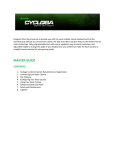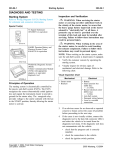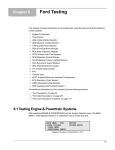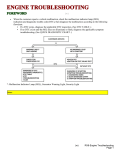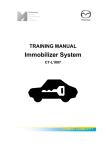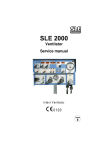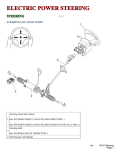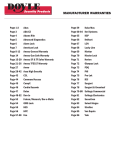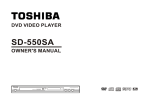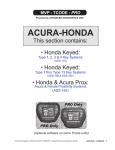Download PASSIVE ANTI THEFT SYSTEM (PATS
Transcript
PASSIVE ANTI THEFT SYSTEM (PATS)—DIAGNOSTIC SERVICE TIPS FORD: Article No. 01-6-2 1996-2001 MUSTANG, TAURUS 1998-2000 CONTOUR 1998-2001 CROWN VICTORIA 2000-2001 FOCUS 2002 THUNDERBIRD 1997-2001 EXPEDITION 1998-2002 EXPLORER 1999 F-250 LD 1999-2001 F-150, RANGER, WINDSTAR 2000-2001 EXCURSION 2001 ESCAPE LINCOLN: MERCURY: 1997-1998 MARK VIII 1998-2001 CONTINENTAL, TOWN CAR 2000-2001 LS 1998-2001 NAVIGATOR 2002 BLACKWOOD 1996-2001 1998-2000 1998-2001 1999-2001 1998-2002 SABLE MYSTIQUE GRAND MARQUIS COUGAR MOUNTAINEER This TSB article is being republished in its entirety to update the model year vehicles and the diagnostic procedures. ISSUE A vehicle equipped with Passive Anti-Theft System (PATS) may not start or crank. This may be caused by several different items. ACTION Refer to the following PATS Diagnostic Charts and text for tips on servicing customer PATS concerns. NOTE ERASING AND REPROGRAMMING THE CUSTOMER’S IGNITION KEYS DOES NOT CURE ANY KNOWN INTERMITTENT PATS NO START ISSUE. DO NOT SIMPLY REPROGRAM THE IGNITION KEYS IF A FAULT CANNOT BE IDENTIFIED. NOTE THE ONLY FORD QUALIFIED PATS KEYS ARE THOSE MANUFACTURED BY: FORD ROTUNDA, ILCO, STRATTEC, HUF, AND VALEO. Glossary Of Terms • PATS - Passive Anti-Theft System • HEC - Hybrid Electronic Cluster • VIC - Virtual Image Cluster • ICM - Instrument Cluster Module • SCIL - Steering Column Ignition Lighting • CJB - Central Junction Box Copyright © 2001 Ford Motor Company PAGE 1 Article No. 01-6-2 Cont’d. ONLY FORD ROTUNDA KEYS ARE QUALIFIED FOR THE FOLLOWING PROGRAMS: • 2000 AND 2001 TAURUS/SABLE • 2001 WINDSTAR • 2001 EXPLORER SPORT (BUILT AFTER JULY 24, 2000) • 2001 EXPLORER SPORT TRAC (BUILT AFTER JULY 24, 2000) • 2001 RANGER (3.0L AND 4.0L) • 2001 ESCAPE • 2002 EXPLORER OTHER AFTERMARKET KEYS ARE NOT FORD QUALIFIED AND CAN CAUSE PATS ISSUES. NOTE DIAGNOSTIC TROUBLE CODE (DTC) P1260 IN THE POWERTRAIN CONTROL MODULE (PCM) IS A DIRECTION TO RETRIEVE FAULT CODES FROM PATS. RETRIEVE FAULT CODES FROM THE APPROPRIATE PATS FUNCTION (PATS/HEC/VIC/ICM/SCIL) AND FOLLOW THOSE PINPOINT PROCEDURES BEFORE ANY FURTHER PCM DIAGNOSIS. NOTE VEHICLES WITH PATS TYPE A, B, OR C SEND AN ENABLE MESSAGE TO THE PCM IF THE PROPER CONDITIONS ARE MET. THE PCM THEN ALLOWS FUEL INJECTOR AND FUEL PUMP OPERATION. THE PROPER CONDITIONS ARE: 1) A VALID KEY READ FOR PATS TYPES A, B, AND C, AND 2) PROPER PATS-PCM INITIALIZATION FOR PATS TYPES B AND C. REFER TO CHART FOR DETAILS ON THE REQUIRED INITIALIZATION. NOTE SOME VEHICLES WITH PATS TYPE B OR C MAY INCLUDE A STARTER INTERRUPT (SI). THESE VEHICLES DO NOT NECESSARILY HAVE TO EXHIBIT A NO CRANK SITUATION TO CONSTITUTE A PATS RELATED NO START. NOTE CHECK FOR A REMOTE VEHICLE STARTER AND REMOVE ANY SUCH EQUIPMENT FROM THE VEHICLE BEFORE CONTINUING DIAGNOSIS. NOTE SOME AFTERMARKET AUDIO EQUIPMENT HAS BEEN FOUND TO KEEP THE RUN/START CIRCUIT ACTIVE FOR OVER 5 SECONDS PAST IGNITION OFF. THIS CAN PREVENT PATS FROM PAGE 2 PROPERLY READING IGNITION KEYS DURING KEY PROGRAMMING. REMOVE OR DISABLE THIS AFTERMARKET EQUIPMENT IF PROBLEMS WITH ANY KEY PROGRAMMING SEQUENCE OCCUR. NOTE WHEN USING THE SERVICE CARD, SELECT ONLY THE FUNCTIONS MENTIONED WITH THE PROCEDURE. SELECTING INCORRECT FUNCTIONS (OR ADDITIONAL UNCALLED FOR FUNCTIONS) MAY RESULT IN A NO START CONDITION AND THE NEED FOR FURTHER DIAGNOSIS AND REPAIR. NOTE REPROGRAMMING OF THE PCM DOES NOT HAVE ANY IMPACT ON PATS IF THE PROCEDURE FUNCTIONS AS INTENDED. NOTE IF THE VEHICLE DOES NOT START AND THERE IS NORMAL PROVE-OUT OF THE THEFT INDICATOR AND DTC P1260 IS NOT STORED IN THE PCM, THEN THE VEHICLE HAS A NON-PATS RELATED ISSUE PREVENTING THE VEHICLE FROM STARTING. NOTE IF THE VEHICLE (SYSTEM TYPES A, B, C, D ONLY) IS A NO START WITH THE THEFT LIGHT FLASHING AT IGNITION ON, AND WITH NO DTC P1260 STORED IN THE PCM, CHECK PCM POWER, GROUND, AND VREF CIRCUITS FOR OPENS OR SHORTS. THE PCM MAY NOT BE OPERATING PROPERLY. NOTE IF THE ENGINE DOES NOT CRANK ON VEHICLES THAT HAVE PATS OPERATING THE STARTER RELAY, VERIFY PATS (PATS/ICM/SCIL) OUTPUT TO THE STARTER RELAY. ALSO VERIFY THE PATS POWER AND GROUND CIRCUITS. NOTE BE AWARE THAT THE NEW PATS SYSTEM TYPES B, C, AND E (ON THE FOLLOWING CHART) OFFER AN ANTI-SCAN FEATURE. IF YOU ARE TRYING TO START A VEHICLE WITH AN UNPROGRAMMED PATS KEY, THE THEFT LIGHT EMITTING DIODE (LED) WILL FLASH RAPIDLY AND THE VEHICLE WILL NOT BE ABLE TO START. IN THIS CASE, LEAVE THE KEY IN THE RUN/START POSITION FOR 30 SECONDS FOR THE ANTI-SCAN FEATURE TO Article No. 01-6-2 Cont’d. TIME OUT. IF THIS TIME-OUT IS NOT COMPLETED, THE VEHICLE WILL CONTINUE TO NOT START WITH EVEN A PROGRAMMED KEY. NOTE AFTER PERFORMING A KEY ERASE PROCEDURE ON A TYPE “E” SYSTEM, DISCONNECT THE DIAGNOSTIC TOOL AND LEAVE IGNITION IN RUN FOR 10 SECONDS. THEN TURN IGNITION OFF AND ADD KEYS. NOTE FORD CUSTOMER SERVICE DIVISION (FCSD) DEALER INSTALLED REMOTE STARTER SYSTEMS ARE APPROVED FOR USE ON FORD VEHICLES. NOTE WHEN REPLACING THE PCM ON A 2000 OR 2001 LINCOLN LS V6 MANUAL TRANSMISSION VEHICLE, ALSO PERFORM A PARAMETER RESET TO THE STEERING COLUMN LOCK MODULE PER THE WORKSHOP MANUAL, SECTION 211-05. NOTE WHEN REPLACING AN INSTRUMENT CLUSTER ON A 2000 OR 2001 LINCOLN LS BE SURE TO DISCONNECT THE VEHICLE BATTERY. FAILURE TO DISCONNECT THE BATTERY MAY RESULT IN SHORTING THE PATS TRANSCEIVER UPON REPLACING THE INSTRUMENT CLUSTER. THIS WILL RESULT IN BLOWING FUSE #224 IN THE CJB. WHEN THIS FUSE IS BLOWN, A NO START SITUATION WILL OCCUR AND A B1681 PATS CODE STORED. Vehicle reference list for using the following PATS Diagnostic Chart: System Type A • 1998 Contour/Mystique built before 2/1/1998 (Kansas City) or 2/16/1998 (Cuautitlan) • 1997-1998 Expedition • 1998 Navigator • 1996-1997 Mustang • 1996-1997 Taurus/Sable System Type B • 1998-2001 Crown Victoria/Grand Marquis • 1998-2001 Explorer (4-Door), Mountaineer (4-Door) • • • • • 2000-2001 Excursion 1998 Mustang 1999-2000 Ranger 1998-1999 Taurus/Sable 2001 Explorer Sport (built before July 24, 2000), Explorer Sport Trac (built before July 24, 2000) System Type C • 1998-2001 Continental • 1999-2001 Expedition/Navigator • 1999-2001 F-150 • 1999 F-250 LD • 2000-2001 LS • 1999-2001 Mustang • 1998-2001 Town Car • 1999-2000 Windstar • 2002 Thunderbird • 2002 Blackwood System Type D • 1997-1998 Mark VIII System Type E • 1998-2000 Contour/Mystique built on or after 2/1/1998 (Kansas City) or 2/16/1998 (Cuautitlan) • 1999-2001 Cougar • 2000-2001 Focus • 2000-2001 Taurus/Sable • 2001 Windstar • 2001 Explorer Sport (built July 24, 2000 and later), Explorer Sport Trac (built July 24, 2000 and later) • 2001 Ranger (3.0L and 4.0L Only) • 2001 Escape • 2002 Explorer (4-Door), Mountaineer (4-Door) ROTUNDA KEY SELECTION CHART WITH PART NUMBERS To order keys, contact Rotunda at 1-800-ROTUNDA (1-800-768-8632). Press “2” to order keys. PAGE 3 Article No. 01-6-2 Cont’d. MERCURY Models Cougar Grand Marquis Grand Marquis Mystique Sable Sable Model Year(s) TRUCKS AND SPORT UTILITY VEHICLES Key Style Ignition/Door 1999-2001 PATS (10-Cut) 1998-2001 PATS (8-Cut) 011-R0235 011-R0222 1998-2001 PATS Valet (8-Cut) 011-R0239 1998-2000 PATS (10-Cut) 1996-1999 PATS (8-Cut) 2000-2001 PATS (8-Cut) 011-R0235 011-R0222 164-R0455 Escape Excursion Expedition Explorer Explorer Explorer Sport and Sport Trac F-150 Harley Davidson F-150 Mountaineer Mountaineer Navigator Ranger Ranger Windstar Windstar Blackwood Blackwood Valet LINCOLN Models LS LS Valet Continental Continental Mark VIII Mark VIII Town Car Town Car Town Car Model Year(s) 2000-2001 2000-2001 1998-2001 1998-2001 1997-1998 1997-1998 1998-2001 1998-2001 1998-2001 Key Style PATS (8-Cut) PATS (8-Cut) PATS (8-Cut) PATS Valet (8-Cut) PATS (8-Cut) PATS Valet (8-Cut) PATS (8-Cut) Jewell PATS (8-Cut) PATS Valet (8-Cut) Model Year(s) Models Ignition/Door 164-R0458 164-R0459 011-R0232 011-R0237 164-R0444 164-R0445 011-R0232 011-R0236 011-R0237 Key Style Ignition/Door (8-Cut) (8-Cut) (8-Cut) (8-Cut) (8-Cut) (8-Cut) 011-R0250 011-R0221 011-R0221 011-R0221 011-R0454 164-R0454 1999-2001 PATS (8-Cut) 2001 PATS (8-Cut) 011-R0221 164-R0461 1998-2001 2002 1998-2001 1999-2000 2001 1999-2000 2001 2002 2002 011-R0222 011-R0455 011-R0232 011-R0221 164-R0454 011-R0221 164-R0454 011-R0232 011-R0237 2001 2000-2001 1997-2001 1998-2001 2002 2001 PATS PATS PATS PATS PATS PATS PATS PATS PATS PATS PATS PATS PATS PATS PATS (8-Cut) (8-Cut) (8-Cut) (8-Cut) (8-Cut) (8-Cut) (8-Cut) (8-Cut) Valet (8-Cut) FORD Model Year(s) Models Contour Crown Victoria Crown Victoria Focus Mustang Mustang Taurus Taurus Thunderbird 1998-2001 1998-2001 1998-2000 2000-2001 1996 1996-2001 1996-1999 2000-2001 2002 PATS PATS PATS PATS PATS PATS PATS PATS PATS Key Style Ignition/Door (10-Cut) (8-Cut) Valet (8-Cut) (8-Cut) (10-Cut) (8-Cut) (8-Cut) (8-Cut) (8-Cut) 011-R0225 011-R0221 011-R0238 011-R0250 011-R0225 011-R0221 011-R0221 164-R0454 164-R0460 PATS DIAGNOSTIC Action PATS Control Function In System Types A and D PATS module (Mark VIII uses Power Steering Column Ignition Lighting (SCIL) Module) System Type B PATS module System Type C Virtual Image Cluster (VIC) for Continental or Hybrid Electronic Cluster (HEC) for Mustang, Town Car, Expedition, F-150/250, and Navigator or Instrument Cluster Module (ICM) for LS and Windstar PAGE 4 System Type E Powertrain Control Module (PCM) Article No. 01-6-2 Cont’d. PATS DIAGNOSTIC Action System Types A and D Theft Indicator 2 seconds Prove-Out (when ignition to RUN/START) System Type B 3 seconds System Type C 3 seconds System Type E 3 seconds PATS DIAGNOSTIC Action Theft Indicator At Key OFF Or ACCY System Types A and D System Type B Contour/Mystique: Flashes every 2 seconds Mustang: No indication All others: No indication due to PATS (may have perimeter theft indication on some vehicles) All others: Flashes every 2 seconds System Type C Flashes every 2 seconds System Type E Flashes every 2 seconds NOTE: ON VEHICLES EQUIPPED WITH PERIMETER ALARM, THE THEFT INDICATOR MAY PULSE BRIGHTER BEHIND THE CONSTANT GLOW DURING PRE-ARM. PATS DIAGNOSTIC Action Maximum Number Of Keys That Can Be Programmed System Types A and D Sixteen (16) System Type B Eight (8) System Type C Eight (8) System Type E Eight (8) PAGE 5 Article No. 01-6-2 Cont’d. PATS DIAGNOSTIC (Continued) Action System Types A and D Erase Ignition Keys Requires only one (1) Procedure With Service key (2 keys for Mark Card VIII) 1) Service Card V2.0 or higher. Select: a) Service Bay Functions b) PATS (SCIL for Mark VIII) System Type B System Type C System Type E Requires two (2) keys Requires two (2) keys Requires two (2) keys 1) Service Card V1.0 or higher. 1) Must use Service Card V6.0 or higher. 1) Service Card V6.0 or higher. Select: a) Service Bay Functions b) PATS Select: a) Service Bay Functions b) VIC for Continental Select: a) Service Bay Functions b) PCM or HEC for Mustang, Town Car, Expedition, F-150/250, and Navigator or c) Enter Security Access (10 minute delay) ICM for LS and Windstar c) Enter Security Access (10 minute delay) c) Enter Security Access (10 minute delay) d) Ignition Key Code Erase d) Ignition Key Code Erase d) Ignition Key Code Erase 2) Turn ignition key OFF and disconnect DLC. 2) Turn ignition key OFF and disconnect DLC. 2) Turn ignition key OFF and disconnect DLC. 3) Cycle key in 3) Cycle Key 1 in ignition to RUN. First ignition to RUN. key will program. (Mark VIII only: Cycle the second key in ignition to RUN). Attempt to start vehicle. 3) Cycle Key 1 in ignition to RUN. 3) Cycle Key 1 in ignition to RUN. 4) Program additional 4) Cycle Key 2 in keys using Spare ignition to RUN. 4) Cycle Key 2 in ignition to RUN. 4) Cycle Key 2 in ignition to RUN. c) Ignition Key Code Erase NOTE: WILL TAKE 2-3 SECONDS WITH A PROGRAMMED PATS KEY OR 8 MINUTES WITH AN UNPROGRAMMED PATS KEY 2) Turn ignition key OFF and disconnect Data Link Connector (DLC). PAGE 6 Article No. 01-6-2 Cont’d. Action System Types A and D System Type B System Type C System Type E 5) Program additional keys using Spare Key Programming Procedure. 5) Program additional keys using Spare Key Programming Procedure. 5) Program additional keys using Spare Key Programming Procedure. Key Programming Procedure. PAGE 7 Article No. 01-6-2 Cont’d. PATS DIAGNOSTIC (Continued) Action Replacing PATS Module (or VIC, HEC, SCIL, or ICM) Required Actions System Types A and D NOTE: ONLY ONE (1) KEY REQUIRED IN ORDER FOR VEHICLE TO START, EXCEPT FOR MARK VIII (2 KEYS ARE REQUIRED FOR MARK VIII). MAKE SURE ALL ADDITIONAL KEYS ARE PROGRAMMED USING SPARE KEY PROGRAMMING PROCEDURE. System Type B System Type C System Type E NOTE: MAKE SURE VEHICLE BATTERY IS DISCONNECTED WHEN REPLACING PATS CONTROL MODULE, OTHERWISE PROPER INITIALIZATION WILL NOT OCCUR AUTOMATICALLY (AND WILL REQUIRE NGS DIAGNOSTIC CARD BE USED TO PERFORM PCM, ACTIVE COMMANDS, KEEP ALIVE MEMORY RESET). NOTE: MAKE SURE VEHICLE BATTERY IS DISCONNECTED WHEN REPLACING VIC/HEC/ICM MODULE, OTHERWISE PROPER INITIALIZATION WILL NOT OCCUR AUTOMATICALLY (AND WILL REQUIRE NGS DIAGNOSTIC CARD BE USED TO PERFORM PCM, ACTIVE COMMANDS, KEEP ALIVE MEMORY RESET). See “Replacing PCM” Action WHEN REPLACING AN INSTRUMENT CLUSTER ON A 2000 OR 2001 LINCOLN LS BE SURE TO DISCONNECT THE VEHICLE BATTERY. FAILURE TO DISCONNECT THE BATTERY MAY RESULT IN SHORTING THE PATS TRANSCEIVER UPON REPLACING THE INSTRUMENT CLUSTER. THIS WILL RESULT IN BLOWING FUSE #224 IN THE CJB. WHEN THIS FUSE IS BLOWN, A NO START SITUATION WILL OCCUR AND A B1681 PATS CODE STORED. PAGE 8 Article No. 01-6-2 Cont’d. Action System Types A and D System Type B System Type C NOTE: THIS PROCEDURE IS VALID FOR INSTALLING A NEW SERVICE PATS (VIC, HEC, OR SCIL). 1) Install new Service NOTE: MAKE PATS (or SCIL for SURE IGNITION IS Mark VIII). OFF WHEN REAPPLYING VEHICLE BATTERY POWER. NOTE: MAKE SURE IGNITION IS OFF WHEN REAPPLYING VEHICLE BATTERY POWER. If a part is being swapped from another vehicle, Reprogram Ignition Keys Procedure must also be performed. 2) Cycle a PATS key in ignition to RUN, will automatically program. (Mark VIII only: cycle a second key in ignition to RUN). Attempt to start vehicle. NOTE: TWO (2) KEYS ARE REQUIRED WITH A NEW SERVICE VIC/HEC IN ORDER FOR VEHICLE TO START. NOTE: TWO (2) KEYS ARE REQUIRED WITH A NEW SERVICE PATS IN ORDER FOR VEHICLE TO START. System Type E 3) Program additional 1) Install new Service 1) Install new Service keys using Spare PATS. PATS Key Programming (VIC/HEC/ICM). Procedure. 2) Use Service Card. Select: a) Service Bay Functions b) PATS 2) Use Service Card V5.0 or higher. Select: a) Service Bay Functions b) VIC for Continental or HEC for Mustang, Town Car, Expedition, F-150/250, and Navigator or ICM for LS and Windstar c) Enter Security Access (10 minute delay) c) Enter Security Access (10 minute delay) PAGE 9 Article No. 01-6-2 Cont’d. Action PAGE 10 System Types A and D System Type B System Type C d) Select Parameter Reset. Select Cancel back to the main menu. Select Ignition Key Code Erase ONLY if the Service part is taken from another vehicle. d) Select Parameter Reset. Select Cancel back to the main menu. Select Ignition Key Code Erase ONLY if the Service part is taken from another vehicle. 3) Turn ignition key to Off and disconnect DLC. Wait 10 seconds before beginning next step. 3) Turn ignition key to Off and disconnect DLC. Wait 10 seconds before beginning next step. 4) Cycle Key 1 in ignition to RUN for 3 seconds minimum. 4) Cycle Key 1 in ignition to RUN for 3 seconds minimum. 5) Cycle Key 2 in ignition to RUN for 3 seconds minimum. 5) Cycle Key 2 in ignition to RUN for 3 seconds minimum. 6) Attempt to start vehicle. If engine will not start, first cycle each key twice more and attempt to start the vehicle. If this fails, perform the following functions using NGS Diagnostic Card 15.0 or later: a) Model year and vehicle type b) PCM c) Active Commands d) Keep Alive Memory Reset, then select Cancel to return to the previous screen e) Disconnect DLC 6) Attempt to start vehicle. If engine will not start, first cycle each key twice more and attempt to start the vehicle. If this fails, perform the following functions using NGS Diagnostic Card 15.0 or later: a) Model year and vehicle type b) PCM c) Active Commands d) Keep Alive Memory Reset, then select Cancel to return to the previous screen e) Disconnect DLC System Type E Article No. 01-6-2 Cont’d. Action System Types A and D System Type B System Type C f) Cycle ignition from OFF to RUN 3 times, each time leaving the ignition in RUN for at least 3 seconds. This initializes the PCM/PATS and now PID PCM_ID = STORED. Theft indicator should prove-out for 3 seconds and vehicle will start. f) Cycle ignition from OFF to RUN 3 times, each time leaving the ignition in RUN for at least 3 seconds. This initializes the PCM/PATS and now PID PCM_ID = STORED. Theft indicator should prove-out for 3 seconds and vehicle will start. 7) Program additional keys using Spare Key Programming Procedure. 7) Program additional keys using Spare Key Programming Procedure. System Type E PAGE 11 Article No. 01-6-2 Cont’d. PATS DIAGNOSTIC (Continued) Action Replacing PCM System Types A and D No special action required System Type B System Type C System Type E NOTE: MAKE SURE IGNITION IS OFF WHEN REAPPLYING VEHICLE BATTERY POWER. NOTE: MAKE SURE IGNITION IS OFF WHEN REAPPLYING VEHICLE BATTERY POWER. NOTE: MAKE SURE IGNITION IS OFF WHEN REAPPLYING VEHICLE BATTERY POWER. WHEN REPLACING THE PCM ON A 2000 OR 2001 LINCOLN LS V6 MANUAL TRANSMISSION VEHICLE, ALSO PERFORM A PARAMETER RESET TO THE STEERING COLUMN LOCK MODULE PER WORKSHOP MANUAL, SECTION 211-05. 1) Install new PCM. 1) Install new PCM. NOTE: TWO (2) KEYS ARE REQUIRED WITH SERVICE PCM IN ORDER TO START VEHICLE. 2) Use Service Card V4.0 or higher. 2) Use Service Card V4.0 or higher. 1) Install new PCM. Select: Select: a) Service Bay Functions b) PATS 2) Use Service Card V6.0 or higher. Select: a) Service Bay Functions b) VIC for Continental a) Service Bay Functions or b) PCM HEC for Mustang, Town Car, Expedition, F-150/250, and Navigator or c) Enter Security PAGE 12 ICM for LS and Windstar c) Enter Security c) Enter Security Article No. 01-6-2 Cont’d. Action System Types A and D System Type B System Type C System Type E Access (10 minute delay) d) Parameter Reset (DO NOT perform any other selections) Access (10 minute delay) d) Parameter Reset (DO NOT perform any other selections) Access (10 minute delay) d) Ignition Key Code Erase (DO NOT perform any other selections) 3) Turn ignition OFF and disconnect DLC. 3) Turn ignition OFF and disconnect DLC. 3) Turn ignition OFF and disconnect DLC. 4) Cycle ignition from OFF to RUN 5 times, each time leaving the ignition in RUN for at least 3 seconds, and OFF for at least 2 seconds. This initializes the PCM/PATS and now PID PCM_ID = STORED. Theft indicator should prove-out for 3 seconds and vehicle will start. 4) Cycle ignition from OFF to RUN 5 times, each time leaving the ignition in RUN for at least 3 seconds, and OFF for at least 2 seconds. This initializes the PCM/PATS and now PID PCM_ID = STORED. Theft indicator should prove-out for 3 seconds and vehicle will start. 4) Cycle Key 1 in ignition to RUN for 2 seconds minimum. 5) Cycle Key 2 in ignition to RUN. 6) Attempt to start vehicle. 7) Program additional keys using Spare Key Programming Procedure. PAGE 13 Article No. 01-6-2 Cont’d. PATS DIAGNOSTIC (Continued) Action How To Add Extra Keys Using The Service Card System Types A and D Cannot be done. See “What to do if ALL KEYS are lost” procedure in this TSB. System Type B System Type C System Type E 1) Use an 1) Use an 1) Use an unprogrammed PATS unprogrammed PATS unprogrammed PATS key in the ignition. key in the ignition. key in the ignition. 2) Service Card V5.0 or higher. 2) Service Card V5.0 or higher. 2) Service Card V5.0 or higher. Select: Select: Select: a) Service Bay Functions a) Service Bay Functions a) Service Bay Functions b) PATS b) PATS b) PCM c) Enter Security Access (10 minute delay) c) Enter Security Access (10 minute delay) c) Enter Security Access (10 minute delay) d) Ignition Key Code d) Ignition Key Code Program Select Program Select Cancel once to return Cancel once to return to menu selections to menu selections e) If another key is to e) If another key is to be programmed, be programmed, insert new key in the insert new key in the ignition, and turn the ignition, and turn the ignition to RUN with ignition to RUN with the new key. Proceed the new key. Proceed with Step (d) above. with Step (d) above 3) Disconnect DLC. 3) Disconnect DLC. Wait 10 seconds Wait 10 seconds before continuing to before continuing to the next step. the next step. 4) Cycle new key in 4) Cycle new key in ignition to RUN and ignition to RUN and confirm vehicle starts. confirm vehicle starts. d) Ignition Key Code Program Select Cancel once to return to menu selections e) If another key is to be programmed, insert new key in the ignition, and turn the ignition. When changing keys, swap the keys quickly, and turn the ignition to RUN with the new key. The total key off time must be less than 10 seconds. Proceed with Step (d) above. 3) Disconnect DLC. Wait 10 seconds before continuing to the next step. 4) Cycle new key in ignition to RUN and confirm vehicle starts. PAGE 14 Article No. 01-6-2 Cont’d. PATS DIAGNOSTIC (Continued) Action What To Do If ALL Keys Are Lost System Types A and D Cut new PATS key to vehicle mechanical cut, then perform Erase Ignition Keys Procedure. System Type B System Type C System Type E Must cut two (2) new PATS keys, then follow Erase Ignition Keys Procedure with NGS Service Card V5.0 or higher. Must cut two (2) new PATS keys, then follow Erase Ignition Keys Procedure with NGS Service Card V5.0 or higher. Must cut two (2) new PATS keys, then follow Erase Ignition Keys Procedure with NGS Service Card V6.0 or higher. PAGE 15 Article No. 01-6-2 Cont’d. PATS DIAGNOSTIC (Continued) Action System Types A and D System Type B System Type C System Type E Spare Key Programming Procedure (i.e., to add an extra key) NOTE: REQUIRES ONE (1) ALREADY PROGRAMMED PATS KEY. NOTE: REQUIRES TWO (2) ALREADY PROGRAMMED PATS KEYS (KEY 1 AND KEY 2). NOTE: REQUIRES TWO (2) ALREADY PROGRAMMED PATS KEYS (KEY 1 AND KEY 2). NOTE: REQUIRES ANY TWO (2) ALREADY PROGRAMMED PATS KEYS (KEY 1 AND KEY 2). NOTE: REQUIRES ONE (1) OR TWO (2) ALREADY PROGRAMMED PATS KEY(S) TO BE AVAILABLE. NOTE: NUMKEYS PID MUST BE LESS THAN 16 TO BE ABLE TO ADD ADDITIONAL KEYS. NOTE: PATS PID SPARE_KY MUST = ENABLE IN ORDER TO PERFORM THIS PROCEDURE. IF SPARE_KY = DISABLE, THEN USING THE SERVICE CARD... NOTE: PATS PID SPARE_KY MUST = ENABLE IN ORDER TO PERFORM THIS PROCEDURE. IF SPARE_KY = DISABLE, THEN USING THE SERVICE CARD... NOTE: THIS PROCEDURE REQUIRES B+ (HOT AT ALL TIMES) TO BE PRESENT AT THE PATS / VIC / HEC / ICM / PCM / SCIL (WHICH IS NOT NECESSARY FOR VEHICLE STARTING AS THE RUN/START CIRCUIT IS USED AT THAT TIME). 1) Use any programmed key in ignition, turn to RUN. Select: NOTE: VIC/HEC PID SPARE_KY MUST = ENABLE IN ORDER TO PERFORM THIS PROCEDURE. IF SPARE_KY = DISABLE, THEN USING THE SERVICE CARD... Select: a) Service Bay Functions a) Service Bay Functions a) Service Bay Functions b) PATS b) VIC for Continental c) Enter Security Access (10 minute delay) or 2) Within 5 seconds, remove programmed key and turn new key to RUN. Theft indicator will prove-out for 2 seconds and new key will start vehicle. 3) Repeat for any additional keys. d) SPARE KEY SWITCH ENABLE. This will toggle the PATS PID SPARE_KY = ENABLE. NOTE: NUMKEYS PID MUST BE LESS THAN 8 TO BE ABLE TO ADD ADDITIONAL KEYS. HEC for Town Car, Expedition, F-Series, and Navigator or ICM for LS and Windstar c) Enter Security Access (10 minute delay) Select: b) PCM c) Enter Security Access (10 minute delay) d) SPARE KEY SWITCH ENABLE. This will toggle the PATS PID SPARE_KY = ENABLE. NOTE: NUMKEYS PID MUST BE LESS THAN 8 TO BE ABLE TO ADD ADDITIONAL KEYS. c) SPARE KEY SWITCH ENABLE. This will toggle the PATS PID SPARE_KY = ENABLE. NOTE: NUMKEYS PID MUST BE LESS THAN 8 TO BE ABLE TO ADD ADDITIONAL KEYS. 1) Turn Key 1 to RUN. PAGE 16 1) Turn Key 1 to RUN. 1) Turn Key 1 to RUN. Article No. 01-6-2 Cont’d. Action System Types A and D System Type B System Type C System Type E 2) Within 5 seconds of removing Key 1, insert Key 2 and turn to RUN. 2) Within 5 seconds 2) Within 5 seconds of of removing Key 1, removing Key 1, insert insert Key 2 and turn Key 2 and turn to RUN. to RUN. 3) Within 10 seconds of removing Key 2, insert new key and turn to RUN. Theft indicator should prove-out for 3 seconds and new key will start vehicle. If theft indicator flashes rapidly, anti-scan has been entered; wait at least 30 seconds with key to RUN and then restart the procedure at Step 1. 3) Within 10 seconds of removing Key 2, insert new key and turn to RUN. Theft indicator should prove-out for 3 seconds and new key will start vehicle. If theft indicator flashes rapidly, anti-scan has been entered; wait at least 30 seconds with key to RUN and then restart the procedure at Step 1. 3) Within 10 seconds of removing Key 2, insert new key and turn to RUN. Theft indicator should prove-out for 3 seconds and new key will start vehicle. If theft indicator flashes rapidly, anti-scan has been entered; wait at least 30 seconds with key to RUN and then restart the procedure at Step 1. 4) Repeat entire procedure for any additional keys. 4) Repeat entire procedure for any additional keys. 4) Repeat entire procedure for any additional keys. PATS DIAGNOSTIC (Continued) Action PCM / PATS Initialization System Types A and D None required. System Type B PCM_ID is exchanged between the PCM and the PATS module. (PATS PIDs PCM_ID = STORED and PCM_VFY = YES) This is done at the assembly plant. If parts are replaced in service, initialization must be performed. Follow instructions for replacing either PCM or PATS module. System Type C System Type E PCM_ID is See “PCM exchanged between Replacement” the PCM and the procedure in this TSB PATS control VIC or HEC (VIC, HEC, or ICM PIDs PCM_ID = STORED and PCM_VFY = YES) This is done at the assembly plant. If parts are replaced in service, initialization must be performed. Follow instructions for replacing either PCM or VIC/HEC/ICM module. PAGE 17 Article No. 01-6-2 Cont’d. PATS DIAGNOSTIC (Continued) Action Vehicles That Have PATS Ground The Starter Relay Directly System Types A and D System Type B 1998 Contour/Mystique 1998-1999 Taurus/Sable 1997-1998 Mark VIII 1999-2000 Ranger 3.0L and 4.0L only System Type C 1999-2000 Windstar, 2000-2001 LS System Type E All vehicles NOTE: VALID PATS KEY TO RUN WILL GROUND STARTER RELAY AND ALLOW CRANKING OF VEHICLE. PATS DIAGNOSTIC (Continued) Action Anti-Scan Feature System Types A and D Not affected - No Anti-Scan System Type B System Type C System Type E Leave ignition in RUN for at least 30 seconds to wait for Anti-Scan to time-out, then cycle key. If fault codes are still present, follow pinpoint test in Workshop Manual. Leave ignition in RUN for at least 30 seconds to wait for Anti-Scan to time-out, then cycle key. If fault codes are still present, follow pinpoint test in Workshop Manual. Leave ignition in RUN for at least 30 seconds to wait for Anti-Scan to time-out, then cycle key. If fault codes are still present, follow pinpoint test in Workshop Manual. If an unprogrammed PATS key is used (all system types) or if there is a mismatch of PCM_ID between PCM and PATS (System B and C only), then a period of 30 seconds anti-scan may be encountered. CLARIFICATION ON SELECTED DTCs Utilize the pinpoint testing found in the appropriate Workshop Manual for proper troubleshooting. Refer to the following for supplemental pinpoint details. PAGE 18 Article No. 01-6-2 Cont’d. DTCs Stored in PATS Control (PATS/VIC/HEC/SCIL/ICM) • B1213: Less than two (2) keys programmed to the PATS control. Use Diagnostic Card to run self test on PATS (or VIC/HEC/SCIL). If DTCs B1232, B1600, B1601, B1602, or B1681 are present, they must be serviced first. If B1213 is the only self test DTC, then cycle second PATS key in ignition to program. • B1232/B2103: Transceiver module antenna failure. Replace transceiver module. • B1600: No PATS key read by the PATS control. This can be caused by the PATS key, PATS transceiver, circuits between the PATS transceiver/PATS control, and/or the PATS control. For 1996-1997 Taurus Sable, 1996-1997 Mustang, and 1997-1998 Expedition/Navigator, overlay all wires from transceiver pigtail harness to control module if an intermittent failure cannot be corrected by replacing transceiver module. • B1601: Unprogrammed PATS key. There is no issue with the PATS key itself, but must be programmed into the PATS memory (unless maximum number of keys already programmed). Follow Spare Key Programming Procedure from the chart. No parts should need to be replaced for this code. • B1602: Partial PATS key was read. Verify that approved PATS key (Ford Rotunda, ILCO, Strattec, HUF, or Valeo) is being used. Large metal objects, additional PATS keys, or devices to purchase gasoline located on the customer’s key chain can cause interference. Instruct the customer to keep such items from touching the ignition key during engine start. It is not necessary to remove the objects from the customer’s key chain. Remote starter equipment can also cause this fault code. Remove any remote starter equipment close to the transceiver before conducting further diagnosis. This DTC can be caused by the PATS key or PATS transceiver. • B1681: PATS transceiver module signal is not received by the PATS control. This code can be caused by circuits between PATS transceiver and PATS control, PATS transceiver, or possibly the PATS control. Follow pinpoint test for troubleshooting. This can also be caused by using the wrong transceiver part number. Verify the correct transceiver part number is being used. • B2139: The PCM_ID does not match between the PCM and PATS (VIC/HEC/ICM). Using Service Card, select Service Bay Functions, PATS (VIC/HEC/ICM), enter Security Access (10 minute delay), Parameter Reset. Then using the Diagnostic Card, select: PCM, Active Commands, Keep Alive Memory Reset. Cancel back to the previous NGS screen. Turn ignition OFF. Then disconnect the DLC. Cycle ignition 3 times slowly (3 seconds ON, 3 seconds OFF) to re-initialize the system. PAGE 19 Article No. 01-6-2 Cont’d. • B2141: NVM configuration failure. This means PATS does not have a stored PCM_ID in memory (PATS PID PCM_ID = not STORED). If DTC U1147 is also present, it must be fixed first. Attempt to fix a U1262 first as well, but it may not be required to fix this fault prior to the B2141. If B2141 is the only DTC, then using Diagnostic Card, select: PCM, Active Commands, Keep Alive Memory Reset. Cancel back to the previous NGS screen. Turn ignition off. Then disconnect the DLC. Cycle ignition 3 times slowly (3 seconds on, 3 seconds off) to re-initialize the system. • U1147: This code indicates a communication issue (Bus+, Bus-) between the PCM and PATS (VIC/HEC/SCIL). This code CANNOT be caused by PATS key, PATS transceiver, or the circuits between PATS transceiver and PATS control. Whenever PATS has U1147 as a stored DTC, there should be a “P1260 Theft Detected Engine Disabled” in the PCM stored codes. Verify that P1260 is stored in PCM. If not, there is a possible power-up issue of the PCM (i.e., PATS is powering up at key to RUN/START but the PCM is not, therefore when PATS tries to communicate over Circuits 914 and 915 to the PCM, there is no response); verify power and ground circuits to the PCM; verify the tester can communicate with the PCM. • U1262: This code indicates a communication issue (Bus+, Bus-) between the PATS/HEC/ICM and some other module. Do not perform PATS diagnostics if a no start is not reported of if theft indicator is not flashing rapidly at ignition RUN position. If the indicator is flashing, check to make sure the PCM is powered up and operating. If it’s not, continue with PCM diagnostics. • B2431: The ignition key (used on 2000 LS) was not programmed. Note that this vehicle has a special ignition key. Replace ignition key, using the correct style. If the fault persists, replace the transceiver module. DTCs Stored in PCM (that are related to PATS) System Types A, B, C, and D only • P1260: This code will be stored any time the PCM disables the vehicle because of the PATS system. Whenever the PCM has a stored P1260, there should be stored DTCs in PATS that require troubleshooting. PAGE 20 System Type E only • B1213: Less than two (2) keys programmed to the PATS control. Erase continuous codes, cycle ignition, then retrieve continuous fault codes again. If DTCs B1232, B1600, B1601, B1602, or B1681 are present, they must be serviced first. If B1213 is the only PATS related code stored, then cycle second PATS key in ignition to program. • B1342: Electronic Control Unit (ECU) defective. Memory failure in PCM. Replace PCM. • B1600: No PATS key read by the PCM. This can be caused by the PATS key, PATS transceiver, circuits between the PATS transceiver/PCM, and/or the PCM. • B1601: Unprogrammed PATS key. There is no issue with the PATS key itself, but must be programmed into the PATS memory (unless maximum number of keys already programmed). Follow Spare Key Programming Procedure from the chart. No parts should need to be replaced for this code. • B1602: Partial PATS key was read. Verify that approved PATS key (Ford Rotunda, ILCO, Strattec, HUF, or Valeo) is being used. Large metal objects, additional PATS keys, or devices to purchase gasoline located on the customer’s key chain can cause interference. Instruct the customer to keep such items from touching the ignition key during engine start. It is not necessary to remove the objects from the customer’s key chain. Remote starter equipment can also cause this fault code. Remove any remote starter equipment close to the transceiver before conducting further diagnosis. This DTC can be caused by the PATS key or PATS transceiver. • B1681: PATS transceiver module signal is not received by the PCM. This code can be caused by circuits between PATS transceiver and PCM, PATS transceiver, or possibly the PCM. Follow pinpoint test for troubleshooting. This can also be caused by using the wrong transceiver part number. Verify the correct transceiver part number is being used. • B2103: Transceiver module antenna failure. Replace transceiver module. • B2431: The ignition key was not programmed. Reference the ROTUNDA KEY SELECTION CHART WITH PART NUMBERS elsewhere in this TSB to verify that you are using the correct key. Article No. 01-6-2 Cont’d. OTHER APPLICABLE ARTICLES: NONE SUPERSEDES: 99-26-6 WARRANTY STATUS: INFORMATION ONLY OASIS CODES: 112000, 112500, 203000, 203200, 204000, 205000 PAGE 21





















